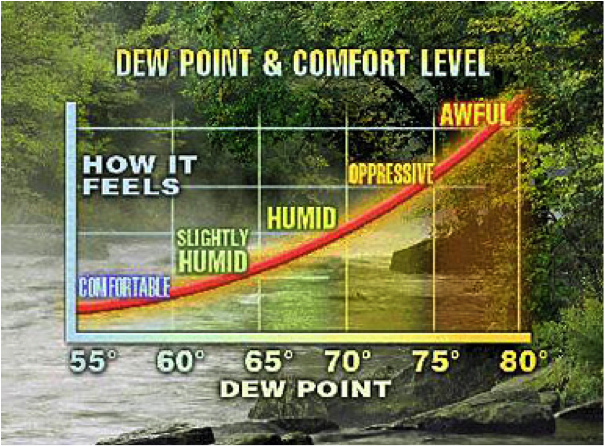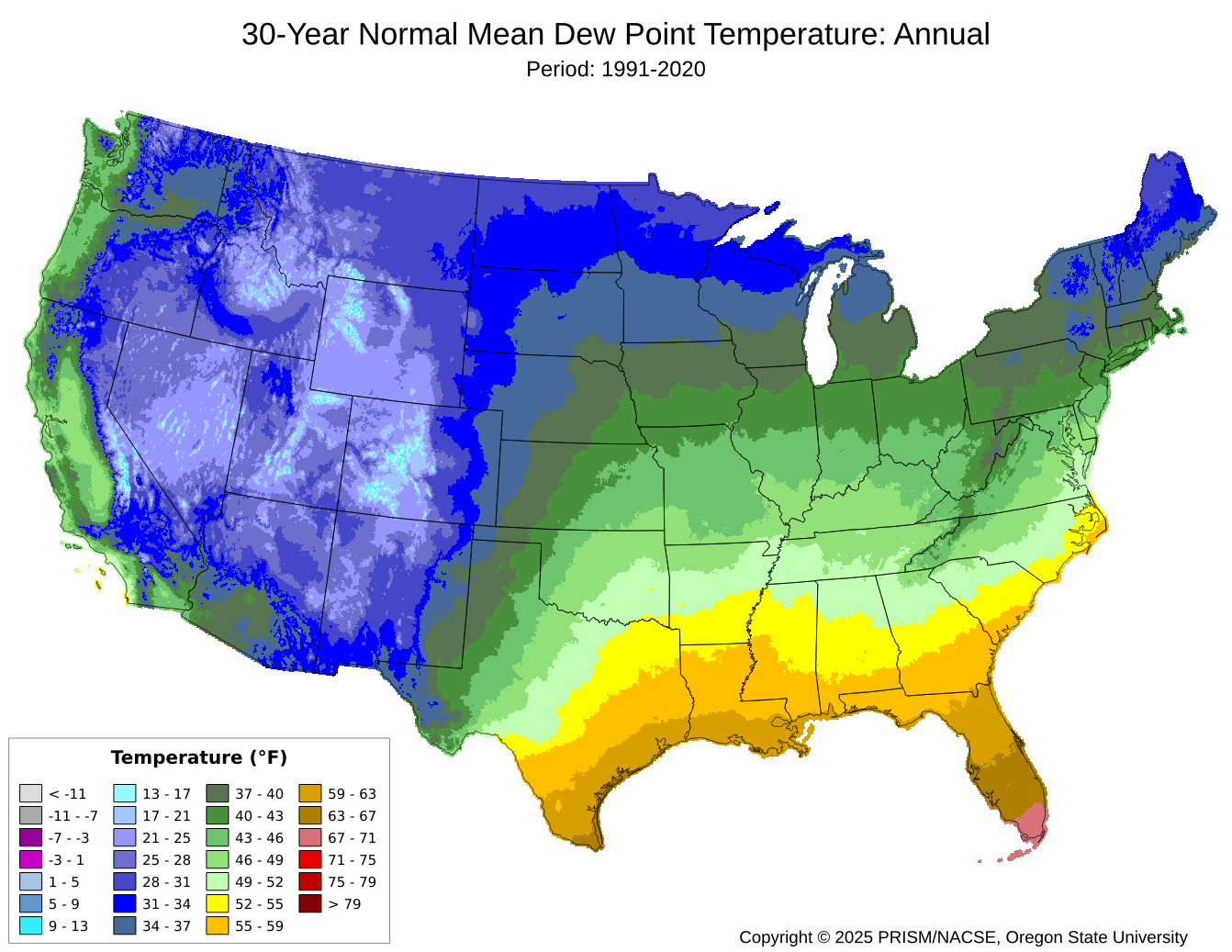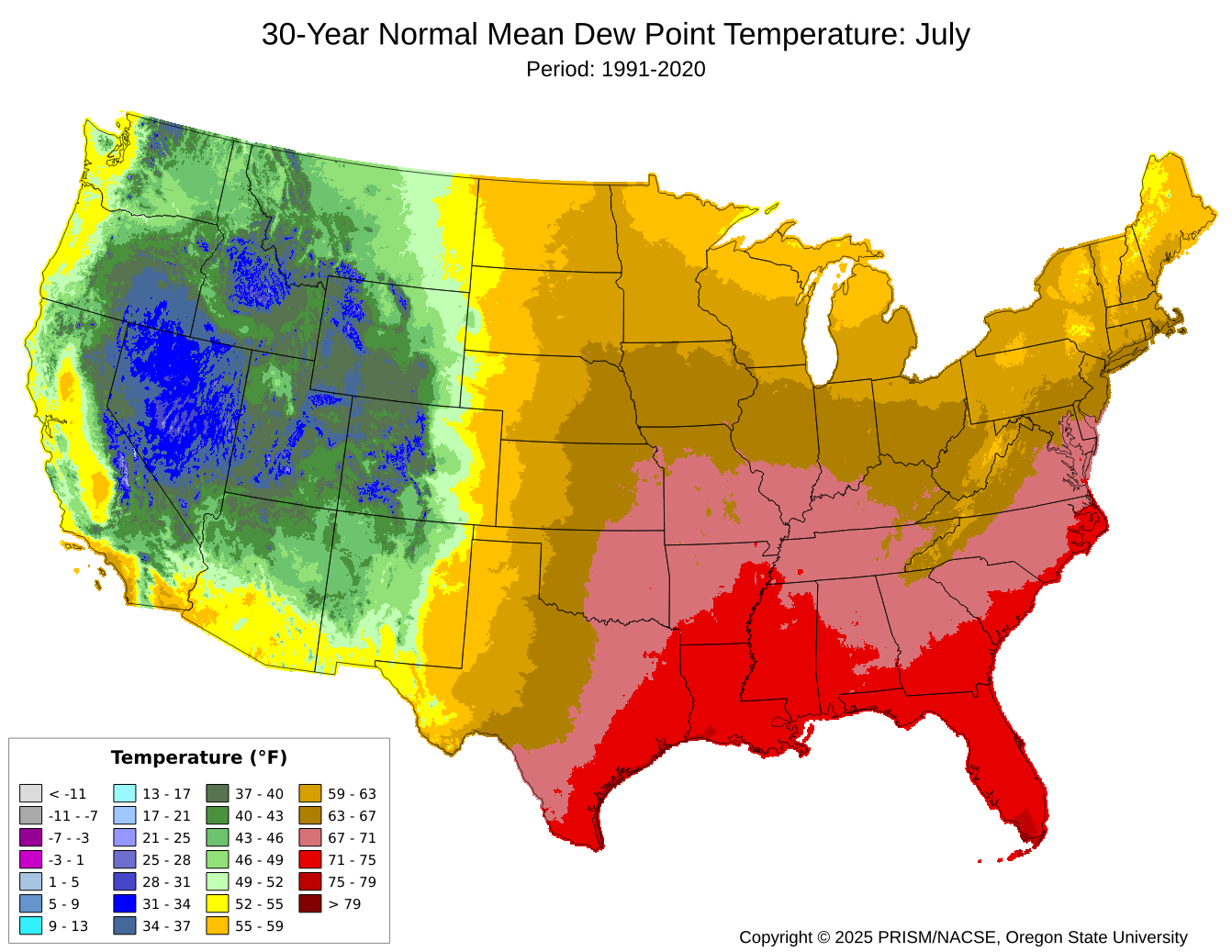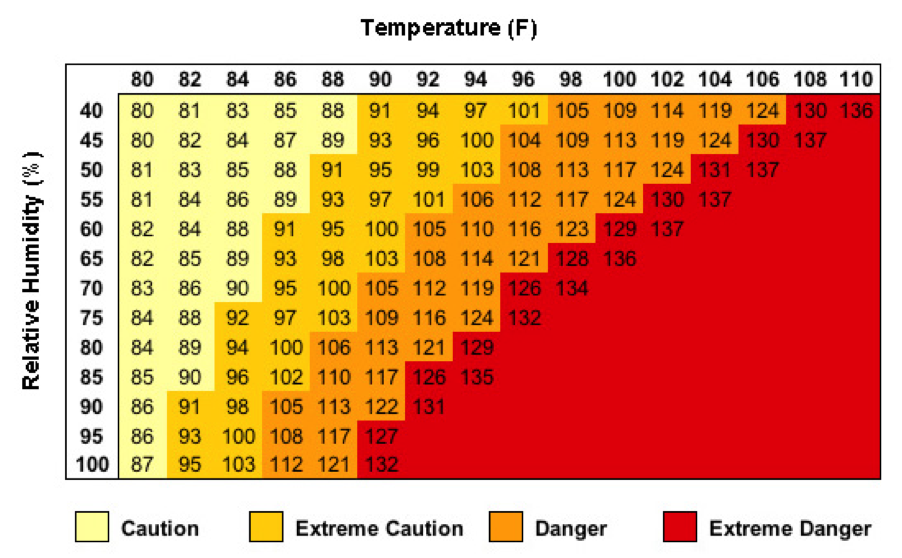David F. Zierden, State Climatologist of Florida - (850) 644-3417 -
Emily Powell, Assistant State Climatologist of Florida - (850) 644-0719 -
The Florida Climate Center, Florida State University, Tallahassee, FL, 32301
April 29, 2014
Download report in PDF format  or read the report below
or read the report below
Introduction
As the State Climate office for Florida, we often get questions about living with high humidity. Many people suffer from respiratory illness or other health problems that are affected by humidity and they are trying to find a suitable climate to move to. The most common questions are:
Is Florida the most humid state in the nation?
Is There a Part of Florida that is Less Humid than Others?
Before trying to answer these questions, it is best to have a brief discussion on how meteorologist measure and quantify humidity in the atmosphere.
Heat Index Climatology
Heat index, also referred to as the ‘feels like’ temperature, is a measure of how hot it feels due to the relative humidity and actual air temperature. For example, using the chart above from the National Weather Service (NWS), if the temperature is 90ºF and the relative humidity is 65%, the heat index or how hot it feels is 103ºF. The NWS equation for heat index assumes shady and light wind conditions.
The heat index is used to determine when to issue local heat advisories and excessive heat warnings. Typically, a heat advisory is issued in Florida when the heat index during the next 24 hours is expected to reach or exceed 105ºF or 108ºF (depending on the location) for at least 2 hours. An excessive heat warning is issued when the heat index is expected to reach or exceed 113ºF in the next 24 hours.
View past heat index data for select stations in Florida:
- Pensacola
- Tallahassee
- Jacksonville
- Gainesville
- Tampa
- Orlando
- Daytona Beach
- Fort Myers
- Miami
- Key West






